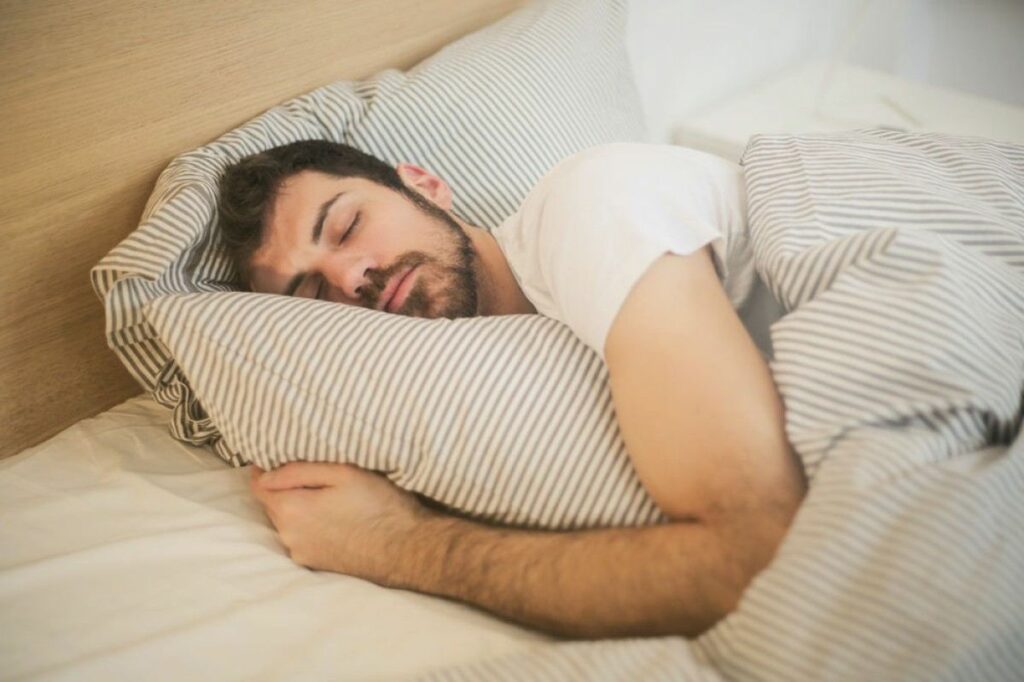Sleep is an essential aspect of our health and well-being, but for many people, getting a good night’s sleep can be a challenge. Insomnia is a common sleep disorder that can significantly impact the quality of life and overall functioning. One promising treatment for insomnia is sleep restriction therapy. In this blog, we’ll explore the benefits of sleep restriction therapy, the techniques used, and how it can help improve sleep and overall well-being.
Contents
What Is Sleep Restriction Therapy?
 Sleep restriction therapy is a form of cognitive-behavioral therapy for insomnia (CBT-I) that aims to improve sleep quality and quantity. It involves limiting the amount of time spent in bed to match the actual amount of time spent sleeping, gradually increasing the time spent in bed as sleep efficiency improves. The goal is to consolidate sleep and reduce the time spent lying in bed awake, which can help retrain the body and mind to associate bed with sleep rather than wakefulness. It is an effective treatment for insomnia in many cases.
Sleep restriction therapy is a form of cognitive-behavioral therapy for insomnia (CBT-I) that aims to improve sleep quality and quantity. It involves limiting the amount of time spent in bed to match the actual amount of time spent sleeping, gradually increasing the time spent in bed as sleep efficiency improves. The goal is to consolidate sleep and reduce the time spent lying in bed awake, which can help retrain the body and mind to associate bed with sleep rather than wakefulness. It is an effective treatment for insomnia in many cases.
Issues Looked By Sleep Restriction Therapy
Sleep restriction therapy primarily targets the following issues related to sleep:
- Difficulty falling asleep
- Difficulty staying asleep (frequent awakenings during the night)
- Early morning awakenings
- Non-restorative sleep (feeling tired or unrefreshed upon waking)
- Chronic insomnia
- Sleep onset insomnia (difficulty falling asleep at the beginning of the night)
- Sleep maintenance insomnia (difficulty staying asleep throughout the night)
Types Of Sleep Restriction Therapy
 Different types of sleep restriction therapy may be used depending on the individual’s needs and preferences. Here are some of the common types:
Different types of sleep restriction therapy may be used depending on the individual’s needs and preferences. Here are some of the common types:
- Basic sleep restriction therapy: This is the most common form of sleep restriction therapy. It involves limiting the amount of time spent in bed to match the actual amount of time spent sleeping, gradually increasing the time spent in bed as sleep efficiency improves.
- Graduated sleep restriction therapy: This involves a more gradual approach to limiting time in bed. The patient starts with their usual amount of time in bed and gradually reduces it by 15-30 minutes per night until their sleep efficiency improves. Once this occurs, time in bed is gradually increased.
- Combined therapy: This involves combining basic therapy with other techniques. Such as stimulus control or relaxation techniques, to address additional factors contributing to insomnia.
- Intensive therapy: This form involves the more aggressive restriction of time in bed, to increase sleep drive and consolidate sleep. Patients may only be allowed to spend a few hours in bed each night, with a strict bedtime and wake-up time. This approach is typically used in cases of severe insomnia.
Techniques Used In Sleep Restriction Therapy
Sleep restriction therapy typically involves the following techniques:
Sleep diary
Keeping a sleep diary is an important part of sleep restriction therapy. Patients record the times they go to bed, fall asleep, wake up, and get out of bed each morning. They also record any daytime naps, as well as any factors that may have affected their sleep, such as stress, caffeine, or alcohol consumption. The sleep diary provides the therapist with important information about the patient’s sleep patterns, which can be used to guide treatment.
Time restriction
 The goal of time in-bed restriction is to increase sleep efficiency and consolidate sleep. Patients are instructed to only spend time in bed when they are sleeping. For example, if a patient’s average total sleep time is six hours per night, the therapist may recommend that the patient only spend six hours in bed each night, with a strict bedtime and wake-up time. If the patient is unable to sleep during this time, they are instructed to get out of bed and engage in a quiet activity until they feel sleepy enough to return to bed.
The goal of time in-bed restriction is to increase sleep efficiency and consolidate sleep. Patients are instructed to only spend time in bed when they are sleeping. For example, if a patient’s average total sleep time is six hours per night, the therapist may recommend that the patient only spend six hours in bed each night, with a strict bedtime and wake-up time. If the patient is unable to sleep during this time, they are instructed to get out of bed and engage in a quiet activity until they feel sleepy enough to return to bed.
Sleep compression
As sleep efficiency improves, the therapist gradually increases the patient’s time in bed to match their total sleep time. For example, if a patient’s total sleep time increases to seven hours, the therapist may recommend increasing their time in bed to seven hours, with a consistent bedtime and wake-up time.
Stimulus control
Stimulus control techniques help the patients to associate the bed with sleep, rather than wakefulness. Patients are advised to limit non-sleep activities in bed. Such as reading or watching TV, and reserving the bed only for sleep and sexual activity. This helps the patient’s mind and body relearn that the bed is to sleep and encourages them to fall asleep more easily.
Relaxation techniques
Relaxation techniques, such as progressive muscle relaxation or deep breathing exercises, can help patients reduce anxiety and promote sleep. These techniques are often used in conjunction with other techniques. Such as time-in-bed restriction or stimulus control.
Sleep hygiene
Good sleep hygiene refers to the habits and practices that can help promote healthy sleep. It educates patients on the importance of good sleep hygiene. Such as avoiding caffeine and alcohol before bedtime, creating a comfortable sleep environment, and maintaining a consistent sleep routine. By implementing these practices, patients can optimize their chances of getting a good night’s sleep.
Benefits Of Sleep Restriction Therapy
 Sleep restriction therapy has several potential benefits for people with insomnia, including:
Sleep restriction therapy has several potential benefits for people with insomnia, including:
- Improved sleep efficiency: It increases sleep efficiency, which is the percentage of time in bed while sleeping. This can help patients feel more rested and alert during the day.
- Faster onset of sleep: By limiting time spent in bed, it can help patients fall asleep more quickly and reduce the amount of time spent lying in bed awake.
- Consolidation of sleep: It can help to consolidate sleep, which means that patients are more likely to experience uninterrupted sleep and wake up feeling more refreshed.
- Reduction in nighttime awakenings: By encouraging patients to limit time spent in bed, it can help to reduce the number of awakenings during the night. It can decrease the likelihood of nighttime anxiety and distress.
- Reduction in daytime fatigue: By improving sleep efficiency and reducing nighttime awakenings, therapy can help to reduce daytime fatigue and improve overall functioning during the day.
- Long-lasting effects: Studies have shown that the benefits of therapy can last long after the treatment period ends, making it a potentially effective long-term treatment for insomnia.
Overall, sleep restriction therapy can help to improve sleep quality, reduce insomnia symptoms, and improve overall well-being and daytime functioning.
Conclusion
Sleep restriction therapy is a promising treatment for insomnia that involves limiting time spent in bed to increase sleep efficiency and consolidate sleep. It can improve sleep quality, reduce insomnia symptoms, and improve daytime functioning. If you are struggling with insomnia, consider talking to a healthcare provider about whether sleep restriction therapy or other treatments may be right for you. Don’t let insomnia disrupt your life – seek help and take the first step towards better sleep and well-being.
For more information, please contact MantraCare. Sleep is an essential part of our daily routine and it plays a significant role in maintaining a healthy body and mind. If you have any queries regarding Online Insomnia Counseling experienced therapists at MantraCare can help: Book a trial therapy session.


